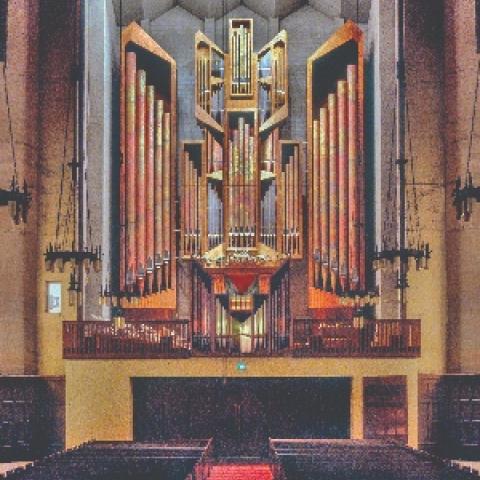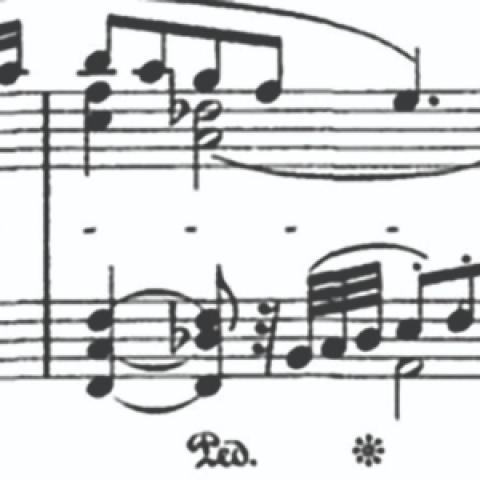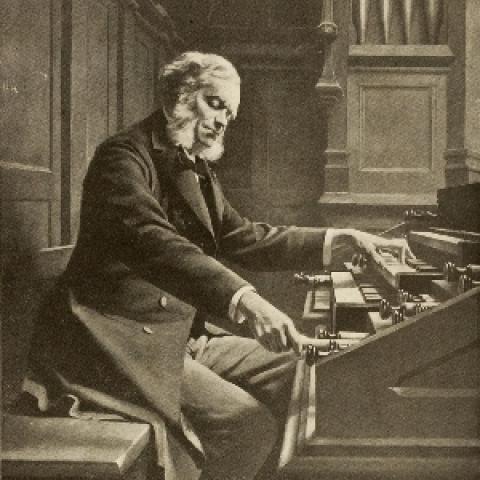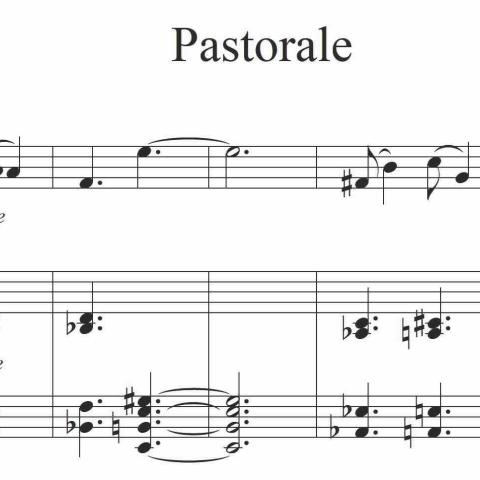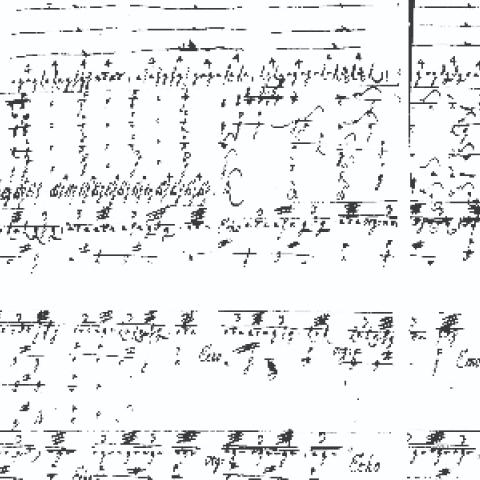Sandro Da Silva studied at East Carolina University, Greenville, North Carolina, earning a master’s degree in sacred music and organ concentration. From 2019 until 2024, he was organist at The Memorial Baptist Church, Greenville.
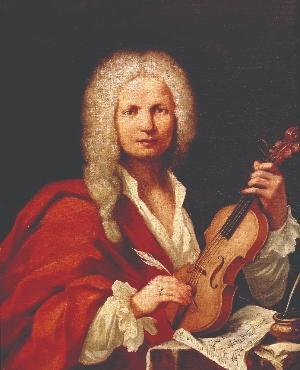
Throughout the history of music, composers have not only influenced and enriched the cultural life in their communities, but they have also influenced each other. The focus of this article is the influence of Antonio Vivaldi (1678–1741) on Johann Sebastian Bach (1685–1750) and specifically how that influence is manifest in Bach’s organ concerto transcriptions. We will explore Vivaldi’s concerto style and his L’estro armonico, opus 3. Finally, we will explore some facets of how Bach approached the Vivaldi concerto style and ritornello form in his transcriptions.
Among the many fine composers of the Italian Baroque period, Vivaldi is recognized to be among the greatest. He was seen as an outstanding composer even by such towering figures as Bach. The respect one composer had for another can be seen in their transcriptions of works for other instruments. Bach was thus demonstrating his respect for Vivaldi’s music when he transcribed for organ several of Vivaldi’s orchestral works. This began when Prince Johann Ernest introduced Bach to Vivaldi’s compositions during Bach’s time in Weimar. During this period, Bach arranged numerous keyboard reductions and transcriptions.
These works were intended for use in church. As the German musicologist and theorist Johann Nikolaus Forkel noted, “In his [Bach’s] time, it was usual for a concerto or a solo on some instrument to be played in church during the Communion.”1 Scholars have noted that the practice of transcription established by Bach caused him to absorb musical-technical principles that later showed up in his own compositions. Robert L. Marshall notes, “Whether prepared primarily for practical performance by the Duke of Weimar or himself, or for purposes of study, the transcriptions represent the composer’s first known sustained encounter with the modern Italian concerto style.”2
Italian instrumental music
The Italian Baroque was populated with great composers: Claudio Monteverdi, Girolamo Frescobaldi, Arcangelo Corelli, Tomaso Albinoni, and many others. Scholars note that Italian instrumental music in this period led the development of a number of new musical forms and styles, such as the Venetian concerto style that brought heightened maturity to orchestral music. In the work of Vivaldi, the trend toward the solo concerto and chamber orchestra found its apex. Throughout his oeuvre, examples of mature sonatas, concertos, and sinfonias abound. Vivaldi’s approach to the concerto grosso led him to envision flexible ensembles with several independent soloists. Running the full gamut, Vivaldi’s double, triple, and quadruple concertos stand midway between concerto grosso and solo concerto.
Vivaldi’s period of instrumental composition extends from 1705 through 1730, during which time he produced a number of concertos for various combinations of solo violin, cello, flute, oboe, and trumpet. Vivaldi produced a variety of pieces for ensembles and soloists. Nicholas Anderson writes: “Vivaldi unquestionably was a composer for the voice; however, it was as an instrumental composer that he made his most original and far-reaching contribution.”3 Some of his most important contributions to orchestral music were the introduction of multiple solo instruments, three-movement cycles, and ritornello form.
Concerto grosso genre
The concerto grosso was characterized by the juxtaposition of the full (tutti) orchestra against a smaller group of solo instruments (ripieno). Often Vivaldi employed the harpsichord as a continuo instrument realizing a figured bass line.
Historically, the genre of concerto grosso originates from the Italian operatic sinfonia. The first composer to use the concerto form was Giuseppe Torelli, and the great era of the genre of the concerto grosso was found in the seventeenth century and the beginning of the eighteenth century. According to Wilhelm Fischer, “The form of the Baroque solo concerto was the most influential form of instrumental music in the High Baroque.”4
With reference to the concerto grosso genre, Vivaldi adapted the relatively new three-movement form to develop his concerto style. Karl Heller states: “Significantly, the early works are distinguished by Vivaldi’s treatment of the opening tutti ritornello and the artful construction of the opening solo passage.”5 As a result, sources draw the evolution of this concerto form through Vivaldi’s twelve concertos that comprise L’estro armonico, opus 3.
Original orchestral music: L’estro armonico, opus 3
These orchestral works were written during Vivaldi’s tenure as Maestro di violino at the Venetian female orphanage, Ospedale della Pietá, beginning in 1703. The collection of concertos included in L’estro armonico was dedicated to the prince of Tuscany, Ferdinando de Medici. In addition, the first performances were at the Pietá during the period of 1709 and 1710. The works were performed as collaborative ventures with the students at the Ospedale.
According to H. C. Robbins Landon, “Opus 3 was published by Estienne Roger in Amsterdam in 1711, with the title L’estro armonico,” which can be translated as the harmonious inspiration, impulse, or frenzy. “It embraced a set of twelve magnificent concertos for sometimes extremely odd combinations of instruments. In 1715 the concertos were reprinted by the London firm of Walsh and Hare, and by 1717 Roger was obliged to reprint.”6
Vivaldi set the twelve concertos in a tonal arrangement alternating major and minor keys and consisting of groups of one, two, and four violin soloists in symmetrical groupings. In addition, each of the concertos within opus 3 contains three movements, fast-slow-fast. Referring to opus 3, Steven Zohn stated: “Vivaldi’s works often widen the book’s focus to encompass tonal practice in early eighteenth-century Italy, thereby leading to a deepened understanding of both a crucial aspect of Vivaldian style and a historical period in which modal principles were rapidly yielding to harmonic tonality.”7 Heller further notes, “The uniqueness of L’estro armonico is due also to both the popularity and the historical importance of the concertos, which, as far as we can now determine, were reprinted or republished in at least fourteen editions in subsequent decades (by John Walsh of London and by Le Clerc le Cadet of Paris as well as by Roger).”8
The concerto is marked by spectacular tuttis, the central slow movements with great cantabile melodies. Landon wrote: “What can explain the immediate success of L’estro armonico? It was, of course, not any one element. Rather it was the freshness, the vigour, the variety, and, in the slow movements, the mysterious tenderness that captivated [people’s] minds.”9
Ritornello form
Another compositional technique present in many movements of opus 3 is the ritornello form. According to Michael Talbot, “Ritornello form is the quasi-automatic choice for the first movement in a Vivaldi concerto. It is the most common choice for finales, and appears in a few slow movements, where it may be reduced to a simple frame around what would otherwise be a through-composed movement for soloists, lightly accompanied.”10
Vivaldi recycled the ritornello form to combine diverse parts, allowing for structural cohesion. As Walter Kolneder states: “With the freedom of modulation gained in about 1680, and the tempered scale that was its inevitable consequence, it was possible to bring the ritornello on different harmonic degrees in accordance with a scheme planned on the basis of a large form.”11
Process and problems of transcriptions
Transcriptions are adaptations of vocal, choral, or instrumental music for an instrumentation other than originally intended by the composer. For example, it is reasonable to play Bach flute sonatas on the violin with only minimal adjustments. In the same manner, adapting clavier works to organ require only the transcription for manualiter.
With reference to the original orchestral music from Vivaldi, Bach arranged the various instrumental parts of the concertos to be played on manuals and pedals. In creating the transcriptions, however, we note that Bach often crafted textures that differed from those of the original concertos. Peter Williams observed: “The passagework typical of Italian string concertos gave new ideas for textures often, in practice, rather different from the string originals. This goes, too, for Bach’s version of the Concerto in G Major, BWV 592, in which the violinistic figuration is replaced by something more appropriate for organ.”12 Leslie Paul noted that, in addition to technical adaptations made by Bach, “Harmonies were often amplified by the addition of an inner part so cunningly derived as to appear essential, added passing and grace notes.”13
Bach’s organ transcriptions
The setting of organ transcriptions in the Italian style includes five works, manualiter and pedaliter, from BWV 592–596. The collection showed up in Weimar between July 1713 and 1714. According to Williams, “The young prince Johann Ernst von Sachsen-Weimar visited Amsterdam and sent Italian music back to Weimar that included the original music from L’estro armonico, opus 3.”14 As mentioned earlier, the setting includes five organ concertos. However, from Vivaldi’s opus 3, Bach arranged only two double violin concertos for organ. Even though the number of Bach’s transcriptions from opus 3 were small, Weber points out that “[f]rom these pieces Bach learned the essential tools that he would use for the expansion and transformation of seventeenth-century genres into large-scale forms.”15
One of these transcriptions, the Concerto in A Minor, BWV 593, has become a part of the standard organ repertoire, with a level of complexity and interpretive possibilities that provide ample challenge to the organist. Example 1 demonstrates basic music information regarding the music score archive of the transcription and original works.
Regarding the process of Bach’s organ transcription, Joseph H. Butler states: “The manualiter transcriptions were transposed and adapted to fit the range of the organ played by Bach in the Weimar region, which was four octaves, from C to c.”16 The two manuals and pedal of the organ were used to create dynamic effects and contrasts between solos and accompaniment, with further contrasts within the two solo lines and tutti. David Schulenberg has written: “Whatever the instrument, the use of two manuals [was] an obvious necessity [in the transcriptions], not only in order to reflect the tutti/solo distinctions of the original but to facilitate performance in several passages where voices cross.”17
Delving more deeply into the first movement (“Allegro”) of BWV 593, we see that the original orchestral composition was set up by Vivaldi for two violin soloists and orchestra. In the transcription, Bach used a second manual to distinguish each solo part and create the interaction within the two solo parts from the tutti. In addition, Bach added notes in some passages that differ from the original. In reference to Example 2, Williams observes, “particularly interesting is that Bach partly filled in the gaps of the original sequence” in measures nineteen and twenty.18
Bach used manual indications of Oberwerk and Rückpositiv to instruct for specific passages. Brenda Lynne Leach notes: “Bach used the manual indications to distinguish tutti from solo passages. While tutti sections are to be played both hands on the Oberwerk, Bach treated solo episodes in three ways:
1. Solo and accompaniment played on the Rückpositiv;
2. Solo on the Rückpositiv with accompaniment on the Oberwerk;
3. Solo on the Oberwerk with accompaniment on the Rückpositiv.”19
The examples mentioned here from the organ transcriptions are clearly regarding the functions of manual changes to bring out the voice leading with accompaniment and tutti. In addition, the transcriptions approach the natural use of the manualiter to establish the music dynamic contrasts ranging from forte to piano.
From the process of transcribing Vivaldi’s works for organ solo, it is clear that Bach gained skill in treating the solo lines individually as they returned in different keys. This process also seems to have given Bach a facility in employing the ritornello form, which he utilized repeatedly in other works as well.
Italian music influences in Bach’s later organ works
It is not overstated to say that the Italian influence, particularly that of Vivaldi, had a major impact on Bach’s works. Following his years in Weimar when he was introduced to much music from the Italian Baroque, Bach continued to deepen and develop ideas that he drew from Italian Baroque influences, of which he had sustained exposure while in Weimar. The court during this time was open to and encouraged the incorporation of foreign innovations in music composition. Geoffrey Webber has observed that “[t]he concentration of musical material found in the Orgelbüchlein complements the other great development of Bach’s adoption of compositional techniques learned from Vivaldi.”20
Vivaldi’s influence is also clear in Bach’s six trio sonatas for organ, BWV 525–530, which include both the three-movement structure and ritornello form. According to Karl Geiringer, “Bach was strongly impressed by the natural grade of the Italian style and fascinated by the results that could be achieved by using Vivaldi’s concerto form in compositions for solo organ.”21 Bach shows even more mature understandings of the Italian influence and ritornello elements in such organ works such as Toccata in F Major, BWV 540i, and Toccata in C Major, BWV 564i.
Conclusion
It is possible to conclude that many of Bach’s works show the impact of Vivaldi and the Italian Baroque. To a large extent, that influence is grounded in Bach’s organ transcriptions of Vivaldi’s concertos. Peter Williams stated: “J. S. Bach’s experience of making organ transcriptions affected his composition much more deeply and widely, certainly well beyond the organ music itself.”22 Beyond the transcriptions, we see the Italian influence in many of Bach’s original works, including sonatas for solo instruments, harpsichord works, and ensemble music.
Bach’s sizable oeuvre reflects a growth and understanding of the varied sounds available to him that could be used to draw an almost orchestral approach to writing for the instrument. It is logical to conclude that his transcriptions of Vivaldi’s orchestral works contributed to this development.
Notes
1. Walter Kolneder, Antonio Vivaldi, His Life and Work (University of California Press, Los Angeles, 1970), page 109.
2. Robert L. Marshall, Eighteenth-Century Keyboard Music, Routledge Studies in Musical Genres, Second Edition (Routledge, New York, 2003), page 90.
3. Nicholas Anderson, Baroque Music from Monteverdi to Handel (Thames and Hudson, Inc., New York, 1994), page 110.
4. Kolneder, page 54.
5. Karl Heller, Antonio Vivaldi: The Red Priest of Venice (Amadeus Press, Portland, Oregon, 1997), page 62.
6. H. C. Robbins Landon, Vivaldi, Voice of the Baroque (Thames and Hudson, Inc., New York, 1993), page 42.
7. Steven Zohn, “The Baroque Concerto in Theory and Practice,” The Journal of Musicology, volume 26, number 4 (Fall 2009), page 569. https://www.jstor.org/stable/10.1525/jm.2009.26.4.566.
8. Heller, page 67.
9. Landon, page 44.
10. Michael Talbot, The Master Musicians: Vivaldi (Schirmer Books, Macmillan Publishing Company, New York, 1992), page 111.
11. Kolneder, page 55.
12. Peter Williams, “Some thoughts on Italian elements in certain music of Johann Sebastian Bach,” FIMA-Fondazione Italiana per la Musica Antica. Source: Recercare, volume 11 (1999), page 197. htps://www.jstor.org/stable/41701304.
13. Leslie D. Paul, “Bach as Transcriber,” Oxford Journals, Oxford University Press, Source: Music & Letters, volume 34, number 4 (October 1953), page 308.
14. Peter Williams, The Organ Music of J. S. Bach, BBC Music Guides (BBC Publications, second edition, London, 2002), page 202.
15. Geoffrey Webber and Nicholas Thistlethwaite, The Cambridge Companion to the Organ (Cambridge University Press, Cambridge, 1998), page 241.
16. Joseph H. Butler, “Emulation and Inspiration: J. S. Bach’s Transcriptions from Vivaldi’s,” The Diapason, volume 102, number 8, whole number 1221 (August 2011), page 20.
17. David Schulenberg, The Keyboard Music of J. S. Bach (Schirmer Books, Macmillan Publishing Company, New York, 1992), page 93.
18. Peter Williams, The Organ Music of J. S. Bach: Preludes, Toccatas, Fantasias, Fugues, Sonatas, Concertos, and Miscellaneous Pieces, volume I (Cambridge University Press, New York, 1980), page 298.
19. Brenda Lynne Leach, “Bach’s Organ Transcriptions: Influence of Italian Masters,” The Diapason, volume 85, number 5, whole number 1014 (May 1994), page 11.
20. Webber and Thistlethwaite, page 241.
21. Karl Geiringer, Johann Sebastian Bach: The Culmination of an Era (Oxford University Press, New York, 1966), page 222.
22. Peter Williams, The Organ Music of J. S. Bach: A Background, volume III (Cambridge University Press, New York, 1984), page 93.

